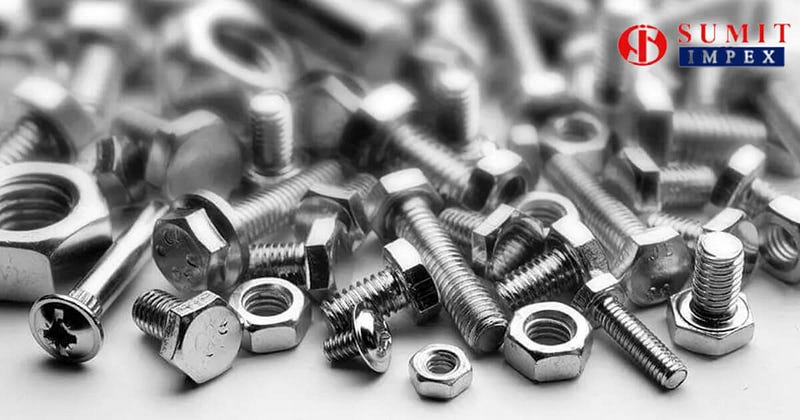Stainless Steel Fastener
The Stainless Steel Fastener Revolution: What You Need to Know
In construction and manufacturing, fasteners are crucial in holding structures together. They are the unsung heroes that keep things in place, ensuring safety, durability, and stability. Among the various types of fasteners, stainless steel fasteners have been gaining popularity due to their exceptional properties and wide range of applications. This article will delve into the stainless steel fastener revolution and provide you with all the essential information you need.
Understanding Stainless Steel Fasteners
Stainless steel fasteners are hardware devices that combine or secure two or more objects. They are made from stainless steel, an alloy containing a high percentage of chromium. This chromium content gives stainless steel unique properties, such as corrosion resistance, strength, and aesthetic appeal. Stainless steel fasteners are known for their durability, longevity, and ability to withstand harsh environments, making them highly suitable for indoor and outdoor applications.
 |
Advantages of Stainless Steel Fasteners
Corrosion Resistance: One of the primary advantages of stainless steel fasteners is their exceptional corrosion resistance. Stainless steel contains chromium, which forms a passive oxide layer on its surface when exposed to oxygen. This oxide layer is a protective barrier, preventing the underlying metal from corroding. As a result, stainless steel fasteners are ideal for applications where they may come into contact with moisture, chemicals, or other corrosive substances.
Strength and Durability: Stainless steel fasteners are renowned for their strength and durability. They have excellent tensile and shear strength, allowing them to withstand high loads and pressure. Styl steel has a high fatigue strength, which can resist repeated stress and maintain its structural integrity over time. This makes stainless steel fasteners reliable and long-lasting, ensuring the integrity of the structures they hold together.
Aesthetic Appeal: In addition to their functional properties, stainless steel fasteners offer aesthetic appeal. Their smooth, polished surface provides a clean and visually appealing finish. Stainless steel fasteners are often used in applications where appearance matters, such as architectural projects, furniture manufacturing, and decorative installations.
Wide Range of Applications: Stainless steel fasteners find applications in various industries, including construction, automotive, aerospace, marine, and household appliances. They are used in structural connections, machinery assembly, plumbing, electrical installations, and more. The versatility of stainless steel fasteners makes them popular across different sectors.
Types of Stainless Steel Fasteners
Stainless steel fasteners come in various types, each designed for specific applications and requirements. Some common types of stainless steel fasteners include:
Bolts and Screws: Stainless steel bolts and screws hold objects together by creating a threaded connection. They are available in different sizes, lengths, and head styles to suit various needs.
Nuts: Stainless steel nuts are paired with bolts or screws to create a secure fastening. Like bolts and screws, they come in various sizes and types, such as hex, wing, and lock nuts.
Washers: Stainless steel washers are used with bolts or screws to distribute the load and prevent damage to the connected surfaces. They are available in different shapes, including flat, lock, and spring washers.
Anchors: Stainless steel anchors are specialized fasteners for securing objects to concrete, masonry, or other solid surfaces. They provide stability and support in construction, shelving, and hanging fixtures.
Choosing the Right Stainless Steel Fastener
When selecting stainless steel fasteners for your specific application, it’s important to consider the following factors:
Grade of Stainless Steel: Stainless steel fasteners are available in different grades, each offering varying corrosion resistance and strength levels. The most common grades include 304 Stainless Steel and 316 stainless steel. Assess your application’s environmental conditions and requirements to determine the suitable grade.
Size and Thread Type: Consider the required size, length, and thread type (e.g., coarse or fine) of the fastener based on the specific connection and load-bearing needs.
Head Style: Depending on your application and aesthetic preferences, choose the appropriate head style for bolts and screws, such as hex head, pan head, or countersunk head.
Application Requirements: Evaluate the environmental factors, such as temperature, moisture, and chemical exposure, to ensure the selected stainless steel fastener is suitable for the application.
In conclusion, the stainless steel fastener revolution has brought significant advancements in the construction and manufacturing industries. Stainless steel fasteners offer numerous advantages, including corrosion resistance, strength, durability, and aesthetic appeal. By understanding the different types of stainless steel fasteners and considering the relevant factors, you can choose the right fastener for your specific application. Embrace the stainless steel fastener revolution and elevate the quality and reliability of your projects.
Comments
Post a Comment